Guest post by Lisa van Aalst.
This is my first fieldwork diary entry from my research journey with MAXQDA. As part of my master’s thesis, I’m conducting research on the topic: “Dalit women and Access to Justice – An Analysis of accessing justice for the survivors of gender and caste-based discrimination”.
Finding themselves at the intersection of gender and caste, Dalit women face severe discrimination. The severity of this discrimination and marginalization is amplified for women in rural and hard to reach areas, such as the state of Uttar Pradesh in India.
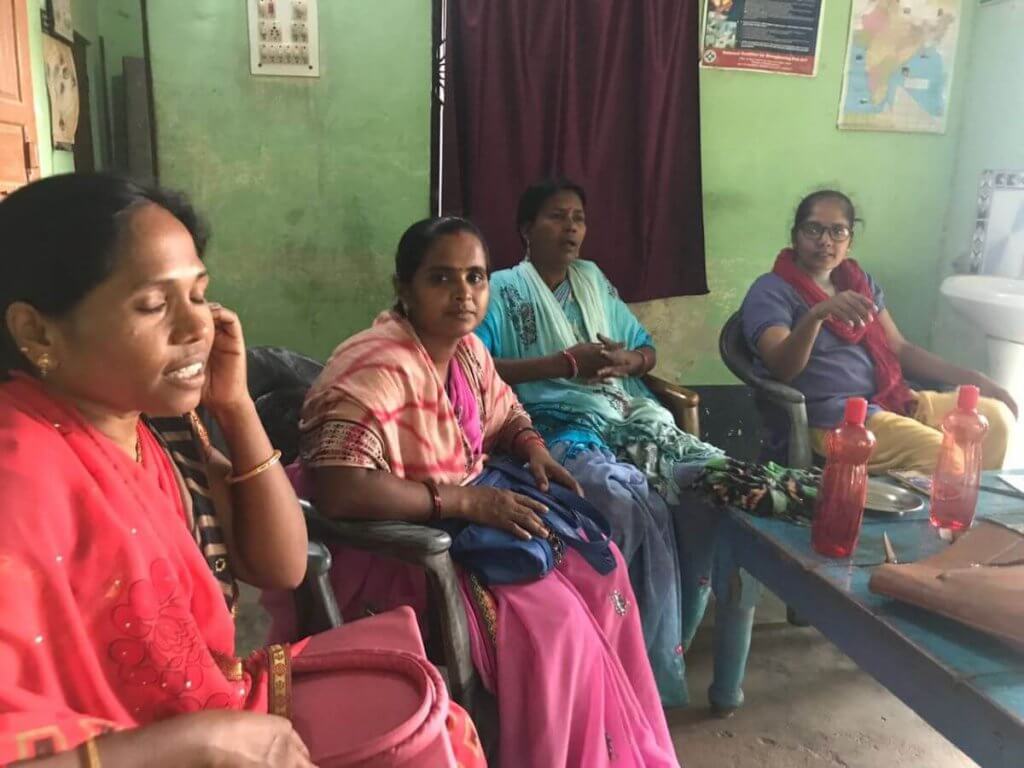
Interviews with Dalit women human rights defenders
Uttar Pradesh is the state with the highest number of Dalits in the population (41 million). According to the National Crime Records Bureau, as stated in their Crime in India (2016) report, the highest number of reported cases of atrocities against Scheduled Castes took place in Uttar Pradesh with some 10,426 cases, which accounts for 25.6% of overall registered cases.
That means that Uttar Pradesh accounts for 1 in 4 crimes against Dalits in the whole of India. In rural areas, the police and judiciary are often inaccessible to the victims of caste and gender-based atrocities. This can be attributed to vast geographical distances, forms of local self-governance ruled by members of the dominant caste, and systematic caste-based discrimination.
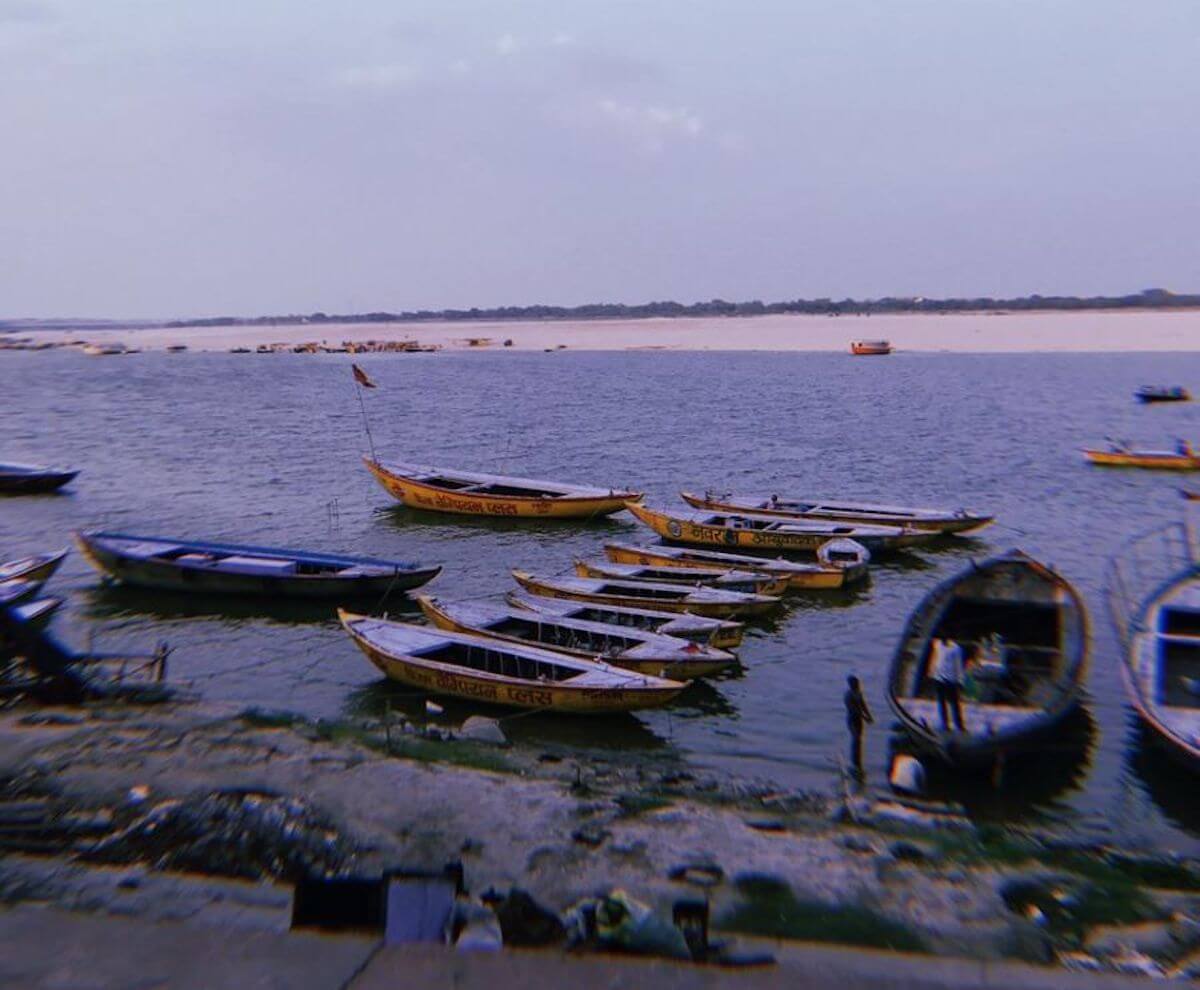
The holy river Ganga in Varanasi (Uttar Pradesh)
However, there is a rising resistance among the Dalit community, deciding not to tolerate caste and gender-based discrimination any longer and claiming their right to access to justice. A practical example of this resistance takes the form of self-organizing structures of Collective Action, which employ diverse methods to gain access to justice and to address the multitude of difficulties they face.
Data Collection
Over the past four months, I have conducted field research in India where I collected data in the above-mentioned research area. To understand how Dalit women, at the intersectionality of gender and caste, gain access to justice, I decided to employ a qualitative approach to put the women’s experiences at the center of my analysis.
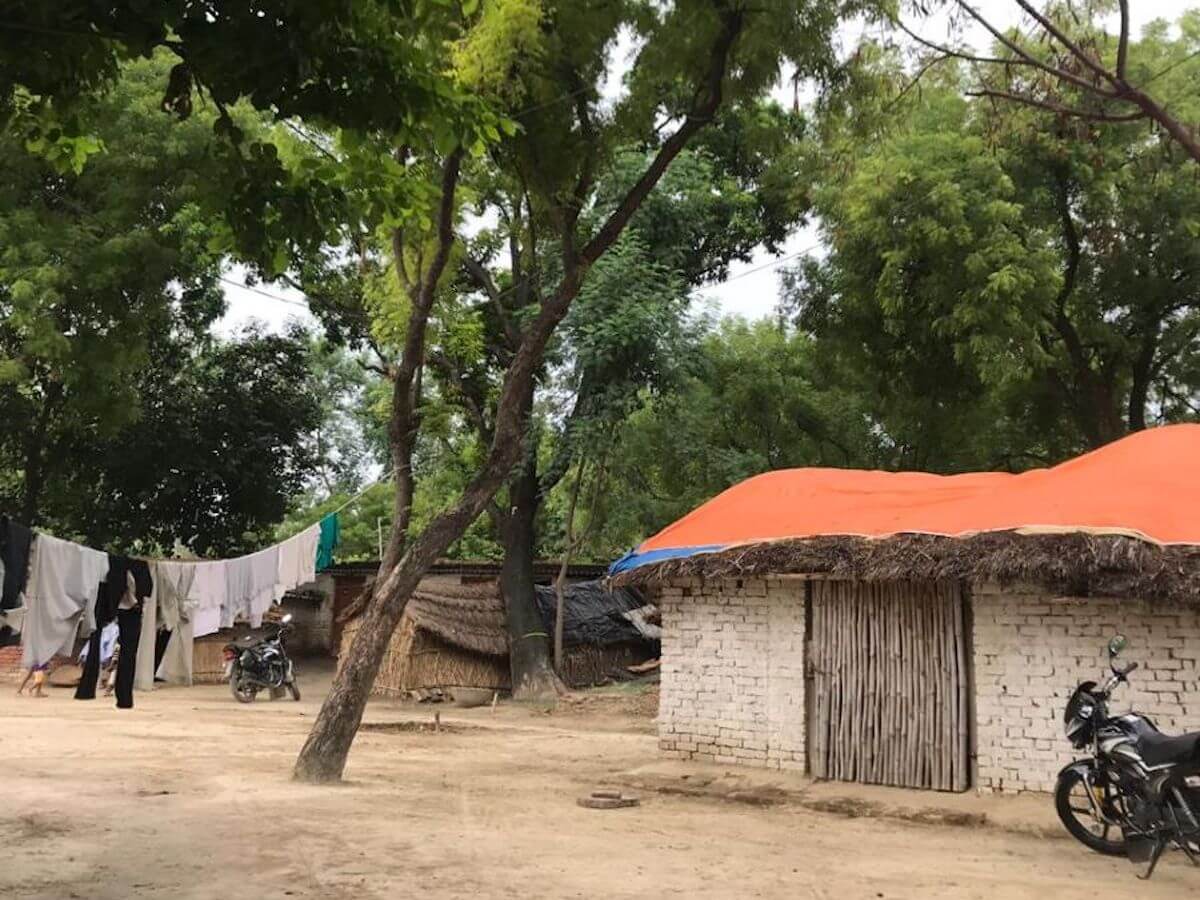
A village in rural Uttar Pradesh
My case study approach has been informed by the collection of primary data as well as secondary data. A variety of methods of data collection have been applied in order to build a holistic understanding of the situation.
Beyond focus group discussions, one of the methods I used was semi-structured interviews. I interviewed a variety of stakeholders such as Dalit women human rights defenders, employees of a local NGO in Uttar Pradesh, as well as employees of the National Dalit Movement for Justice, my hosting organization in Delhi.
Interview Analysis with MAXQDA Example
Data Organization with MAXQDA
To begin with, I opened MAXQDA and created a new project for my research data, starting with my transcriptions from the interviews I conducted in Uttar Pradesh. There are different functions available at this point, such as the import of documents, focus group transcripts, transcripts with timestamps, and more.
After importing the data you will have an overview of your imported data in a window on the left side of the screen, while you can start your analysis in the main window.
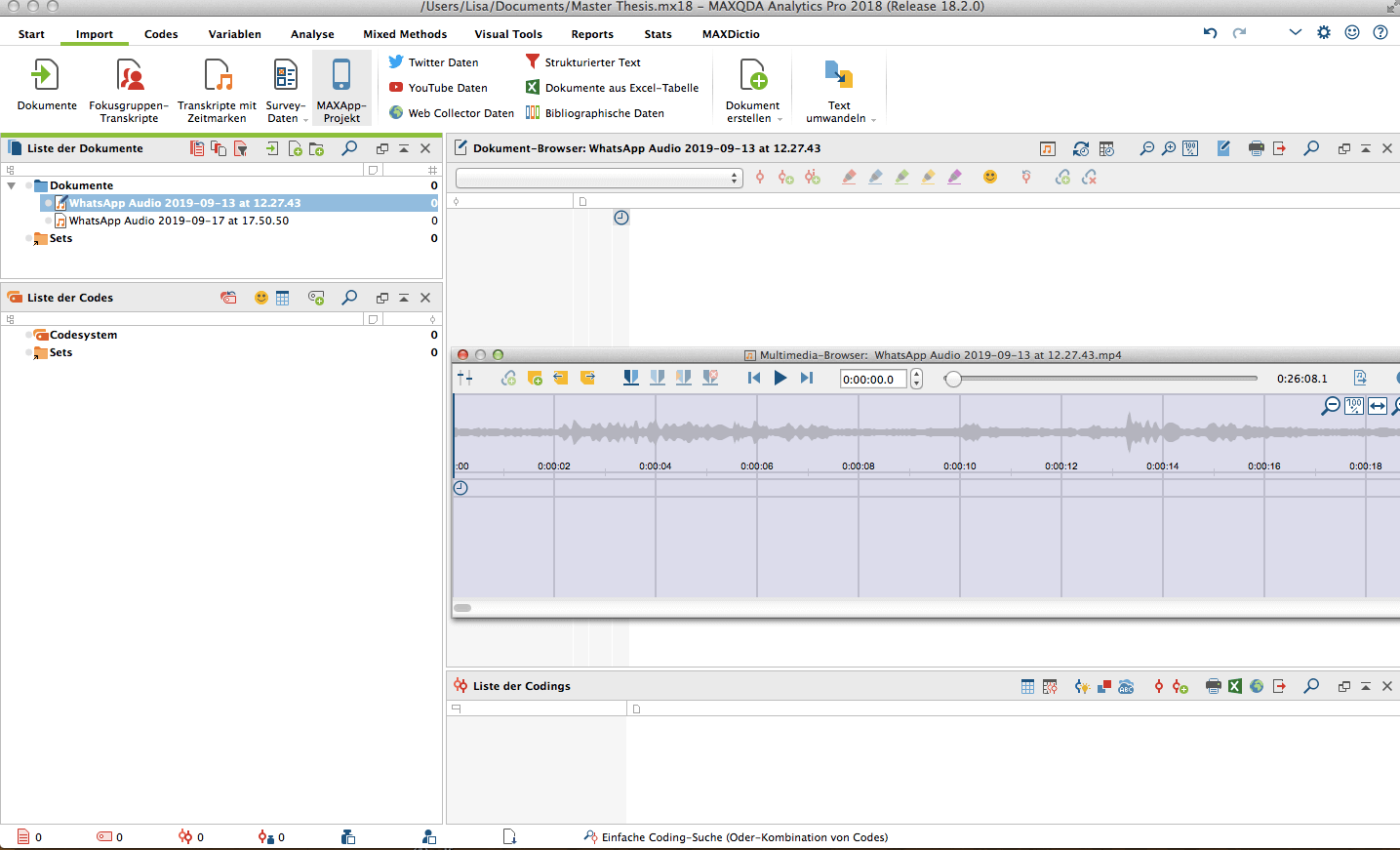
Data Import into MAXQDA
Transcribing with MAXQDA
In order to understand and analyze the collected data for my research, I started assessing the data by transcribing my interview recordings using MAXQDA’s Transcription Mode feature. For me, using MAXQDA was quite helpful since it is possible to see the document in which you are writing and the audio sequence on the same screen.
When examining the recording, it is possible to increase or decrease the speed of the sound. In my case, I decreased the speed a little so that I was able to write while listening to the audio file. At the same time, it can be helpful to decrease the speed of a recording when some statements are unclear in their pronunciation or when there is some background noise.
Another helpful tool in MAXQDA’s Transcription Mode is the option to automatically change the speaker and use autotext to define abbreviations for words. For example, after starting to transcribe, you will get tired of starting every new paragraph with ‘Respondent’ or ‘Interviewer’. In this case, you can create a shortcut by typing R, and Respondent will be written; this is really helpful for long transcriptions.
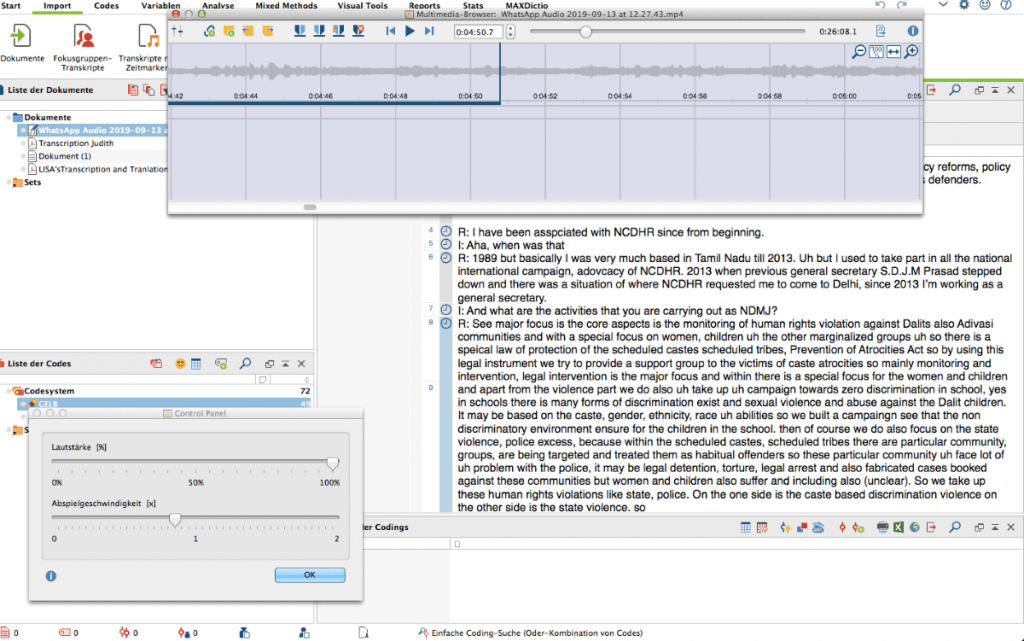
Screenshot of using MAXQDA software transcribing an interview
Finally, I recommend using timestamps when transcribing. These markers are really useful for listening back to a certain sequence or statement in your interviews. For example, use timestamps if you want to clarify something or if you want to understand how a certain statement was given. Was it hesitant? Was it emotional? Such things can be of importance for further research.
Using timestamps also gives you an idea of the amount of time the researcher and the respondent are speaking. Is the respondent confident and do they have a lot to tell with little interruption by the researcher, or is the respondent not willing or too shy to respond and does the researcher need to ask a lot of follow up questions?
Using MAXQDA’s Transcription Mode made the work of transcribing easier, faster, and fun by having the document as well as the recording clearly arranged on one screen. The different tools make the transcription easy and allow for an in-depth analysis of your data.
Learn more about MAXQDA’s
Transcription Mode
What’s next
I will continue analyzing my data in order to write-up my final research paper. For that, I need to analyze my focus group discussions, participant observations, and additional secondary data. I will write about my further experiences using MAXQDA in a second fieldwork diary.
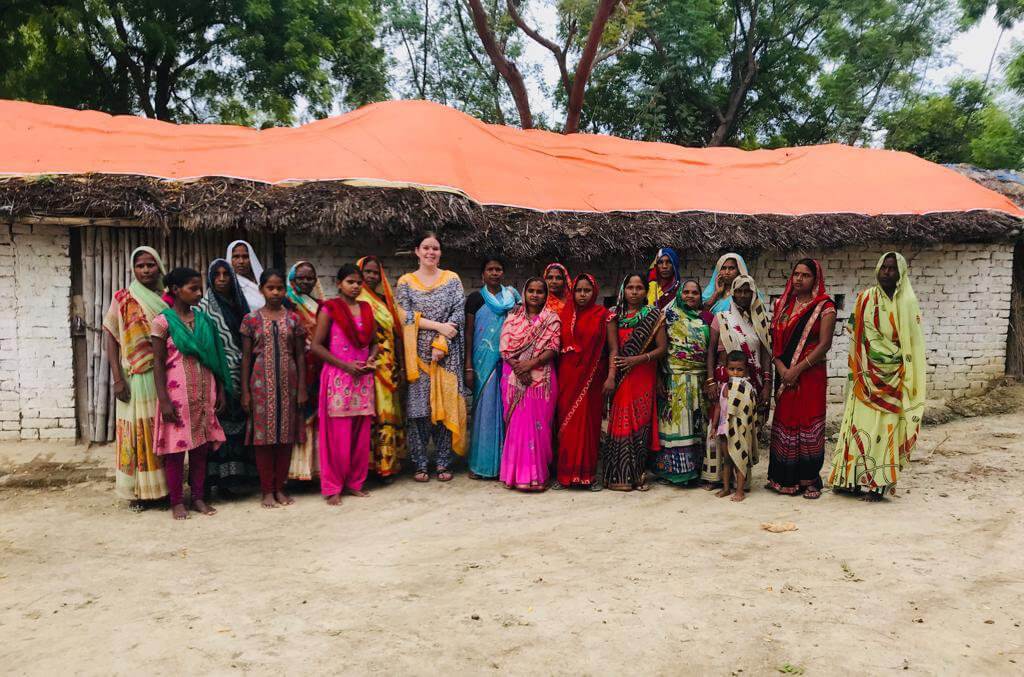
Conducting field research in rural areas of India has been a deeply enriching experience and I deeply admire the brave and resilient women I met on this journey, who fearlessly stand up for their rights and those of their community. I am happy that I can share more about the plight of the Dalit community with the MAXQDA network.
If you would like to get to know more about the wonderful work that my host organization is doing, feel free to visit their website here:
National Campaign on
Dalit Human Rights (NCDHR)
About the Author
Lisa Marie van Aalst is an M.A. student in Development Management at the Ruhr University Bochum, Germany. Her research project titled “Collective Action and Access to Justice – A case study of Dalit Women Collectives in rural Uttar Pradesh, India” started in August 2019 in rural areas of Uttar Pradesh, India.
Make sure to keep an eye out for updates from Lisa here in the MAXQDA Research Blog!
Meet the 2019 #ResearchforChange
Grant Recipients

 Lisa Marie van Aalst is an M.A. student in Development Management at the Ruhr University Bochum, Germany. Her research project titled “Collective Action and Access to Justice – A case study of Dalit Women Collectives in rural Uttar Pradesh, India” started in August 2019 in rural areas of Uttar Pradesh, India.
Lisa Marie van Aalst is an M.A. student in Development Management at the Ruhr University Bochum, Germany. Her research project titled “Collective Action and Access to Justice – A case study of Dalit Women Collectives in rural Uttar Pradesh, India” started in August 2019 in rural areas of Uttar Pradesh, India.